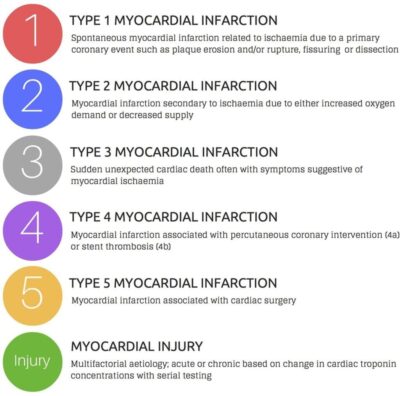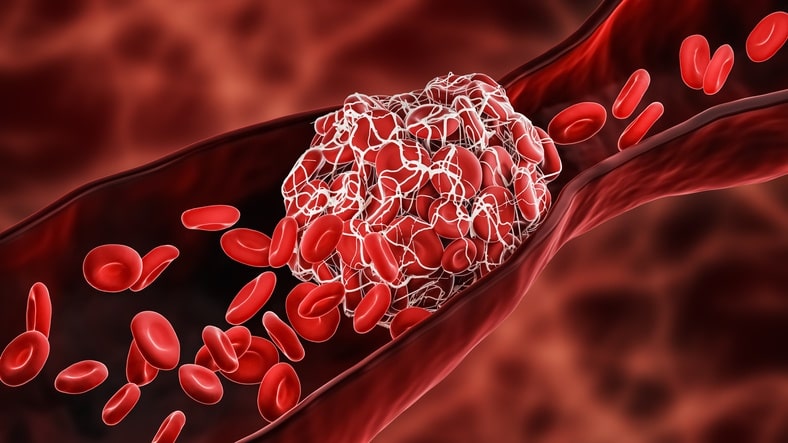Also known as myocardial infarction, heart attacks can occur to just about anyone. However, not all are fatal. Based on various factors, some people come through a myocardial infarction and go on to live a full life. Others may not. So, what exactly causes some people to survive heart attacks over others? Here is some vital information about heart attacks and what influences your chances of survival.
How Many Americans Suffer a Heart Attack Every Year?
About 805,000 people¹ have a heart attack every year in the United States. Of these, 605,000 are a first heart attack, and 200,000 are people who have already suffered one before. Not all myocardial infarctions are noticeable. In fact, one in five is silent. A silent heart attack is where the heart is damaged by irregular blood flow without obvious symptoms.
Chances of survival depend on the severity of the myocardial infarction. According to recent studies, massive heart attack survival rates are low, but the survival rate after heart attacks in hospital care is between 90% to 97%².
What Are the Warning Signs of a Heart Attack?

The onset of a heart attack can potentially look very different depending on the person. Sometimes they come on strong, and there is no mistaking the symptoms. Other times, the attack happens over an extended period of time with less notable symptoms. Here are some warning signs that you or a loved one may be experiencing an attack.
- Shortness of breath. Either on its own or with chest pain.
- Chest discomfort. Pressure, tightness, or pain that lasts for several minutes or comes and goes.
- Lightheadedness. If you suddenly feel dizzy or lightheaded and experience chest pain or shortness of breath, it could indicate that your heart isn’t working as efficiently as it should.
- Nausea, vomiting, or feelings of severe heartburn/Indigestion. While these may be indicators of other issues, if you experience these symptoms along with other heart attack symptoms or are at risk for heart problems, be sure to see your doctor.
- Throat, arm, or jaw pain. If you feel pressure in your chest that spreads upward to your throat and jaw, it could signify something more serious.
- Unexplained extreme exhaustion. If your heart isn’t moving oxygen around your body as efficiently as it should, you may have trouble completing tasks that should be easy for you.
Are you at risk for heart disease? Our heart CT scanners can help detect issues before a heart attack happens. Contact us today.
Are There Different Levels of a Heart Attack?
Myocardial infarctions happen when blockages in the arteries stop or restrict blood flow to the heart. Damage to the heart depends on where the blockage occurs and the size of the clot. However, not all heart attacks are created equal.
Here is the universal classification of myocardial infarction³, according to the American Heart Association (AHA):
- MI Type 1 – Spontaneous Myocardial Infarction
- MI Type 2 – Myocardial Infarction Secondary to an Ischaemic Imbalance
- MI Type 3 – Cardiac Death Due to Myocardial Infarction
- MI Type 4a – Myocardial Infarction Related to Percutaneous Coronary Intervention (PCI)
- MI Type 4b – Myocardial Infarction Related to Stent Thrombosis
- MI Type 5 – Myocardial Infarction Related to Coronary Artery Bypass Grafting (CABG)
It’s also possible to suffer a myocardial injury that leads to cardiovascular issues or episodes, including a type of heart attack.
Image Source: Chapman, AR., Adamson, PD., Mills NL. Assessment and classification of patients with myocardial injury and infarction in clinical practice. Heart 2017;103:10-18⁴
What Type of Heart Attack Is Most Fatal?
All heart attacks are dangerous and can affect patients differently depending on their current health status. However, you may have heard of a widowmaker heart attack⁵. This type of STEMI myocardial infarction involves the critical or total blockage of the left anterior descending (LAD) artery.
When a blockage like this occurs at the beginning of the vessel, it can have devastating or fatal results. In fact, only about 12% of people⁶ who suffer a widowmaker outside of a hospital setting survive.
Because the LAD artery runs down the front main side of the heart, stopping the blood supply at this crucial point means the rest of the artery and the entire front of the heart becomes compromised, and the heart muscle will start to die. This type of heart attack is extremely serious and requires immediate intervention from emergency healthcare professionals.
How Many Americans Survive a Heart Attack?
Today, surviving a coronary episode is much more common than just a few decades ago. Fatality rates used to be as high as 50%. However, more than 90%⁷ of people today survive a heart attack. Surviving a myocardial infarction is primarily due to recognizing the symptoms, getting prompt treatment, and prevention awareness.
If you believe you or a loved one may be suffering a heart attack, take action right away. The sooner you seek help, the better. Even if you discover that your symptoms were not due to myocardial infarction, they could be warning signs of progressing cardiovascular disease or other conditions. When it comes to your heart health, it’s better to be cautious and get help rather than ignore the symptoms of what could be causing irreversible cardiovascular damage.
Related: Las Vegas Heart Scans
What Are the Treatments for a Heart Attack?
Depending on the severity of the attack, the American Heart Associate states⁸ that surgery may be necessary along with long-term use of medications to prevent another attack from happening. Some of these treatments may include:
- Angioplasty
- Artificial heart valve surgery
- Atherectomy
- Bypass
- Cardiomyoplasty
- Radiofrequency ablation
- Stent
- Transmyocardial revascularization (TMR)
- Other minimally invasive heart surgery
- Heart transplant
Your healthcare professional may also recommend a heart CT scan to periodically check the health of your heart muscles and blood vessels. Heart scans are a simple procedure that can be completed in a matter of minutes. Contrast material may be administered to get a clearer picture of the arteries, and a coronary calcium score can determine artery health.
CTA: Contact our healthcare professionals to learn how a preventative heart CT scan can help you avoid cardiovascular issues.
How Can You Improve Your Chances of Surviving a Heart Attack?
Understanding your risks of heart disease and putting healthy habits in place can increase your chances of surviving a myocardial infarction and possibly preventing one in the future. Talk to your doctor about lifestyle changes that may help you promote good health and a strong heart, which may include the following:
- Stop smoking
- Get some physical activity every day
- Keep an eye on cholesterol levels
- Don’t let your blood pressure get too high
- Maintain a healthy weight
- Reduce stress
- Limit alcohol
A healthy heart is critical to your quality of life. Implementing healthy habits can decrease your chances of an attack occurring and help you survive if one does.
Survival also depends on prompt identification of symptoms and treatment. Paying attention to your body, regular doctor appointments, and preventative scans as recommended by your doctor are essential for intervention before a cardiac attack happens.
Sources:
¹Centers for Disease Control and Prevention (CDC). (27 September 2021). Heart Disease Facts. Retrieved 24 January 2022.
²Fogoros, R. (8 January 2022). How Many People Survive a Heart Attack? Verywell Health. Retrieved 24 January 2022.
³Thygesen, K., Alpert, J. et al. (24 August 2012). Third Universal Definition of Myocardial Infarction. Circulation AHA Journal Vol. 126, Issue 16. Retrieved 15 April 2022.
⁴Chapman, AR., Adamson, PD., Mills NL. Assessment and classification of patients with myocardial injury and infarction in clinical practice. Heart 2017;103:10-18. Retrieved 15 April 2022.
⁵Ahmed, M. (28 January 2015). The Widow Maker Heart Attack. MyHeart.net. Retrieved 15 April 2022.
⁶University of Pittsburgh Medical Center (UPMC). (18 February 2019). What is a Widowmaker Heart Attack? UPMC HealthBeat. Retrieved 15 April 2022.
⁷Harvard Medical School. (28 September 2010). How Heart Attacks Became Less Deadly. Harvard Health Publishing. Retrieved 24 January 2022.
⁸American Heart Association (AHA). (31 March 2017). Treatment of a Heart Attack. Retrieved 24 January 2022.


